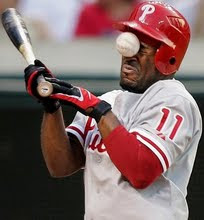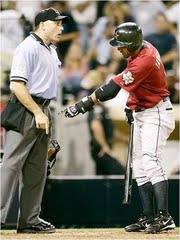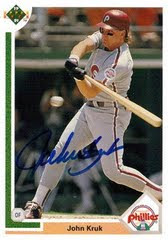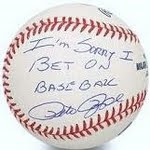The latter approach is going to be more difficult to sort through, average, and make presentable and thus will come out at a later date (sometime after I write Memo II, unless TBO wants to organize all the data for me). This post will deal with my first approach to the data -- average BB% and K% by age group in 2009 (200 min. PA).
Before I present the data, let me present my initial hypotheses regarding the data. I made two predictions about the data. The first prediction was that BB% would be higher on the extremes (the youngest and oldest players). I made this assumption on the presumptions that 1) players who came into the majors earlier would need more "raw talent" to survive 200+ PA and 2) that guys with poor BB%'s would whittle out of the majors as they got older and had lower bat speed and slower feet. My second prediction was that K% would dramatically increase as players got older than 30 because of declining bat speeds.
Here is the actual data (click to enlarge):

| Age | Avg BB% | Avg K% |
| 21 | 9.20% | 24.20% |
| 22 | 8.20% | 22.43% |
| 23 | 9.23% | 22.23% |
| 24 | 7.58% | 21.49% |
| 25 | 9.00% | 19.32% |
| 26 | 8.90% | 19.53% |
| 27 | 9.09% | 19.46% |
| 28 | 8.90% | 20.01% |
| 29 | 9.78% | 20.38% |
| 30 | 10.20% | 23.03% |
| 31 | 9.99% | 19.90% |
| 32 | 8.88% | 18.93% |
| 33 | 8.44% | 16.78% |
| 34 | 9.39% | 17.35% |
| 35 | 8.94% | 15.44% |
| 36 | 10.03% | 19.21% |
| 37 | 11.89% | 18.73% |
| 38 | 10.60% | 20.67% |
| 39 | 12.70% | 23.70% |
| 40 | 14.00% | 20.70% |
| 41 | 13.00% | 17.20% |
Surprisingly enough, K% decreased amongst the age 30 to 35 groups. Walk rate had a slight upward tendency which I feel is understated by the graphic because the degree of change is so small (a 1% change in BB% seems more dramatic than it appears, considering that BB%'s ranged from 7.58 to 14.00%). Players tend to be "in their prime" from ages 25-34, so it is not very shocking that the BB% data is pretty flat line across that age group. After age 35, you can see the BB% spike, although the sample size of players within an age group decreases as the age group gets older than 35 (which is expected, considering that veterans (aka old guys) have to be worth their price tag to accumulate 200+ PAs). It is worth noting that only four players older than 38 accumulated 200+ PA's in 2009. I should probably also mention that only two MLB players (Travis Snyder and Elvis Andruws) under 22 accumulated 200+ PA's. Furthermore, the entire sample size of MLB players who accumulated 200 PA's in 2009 was 346. It seems that player begin to lose their bat speed at 35. If any MLB teams are reading this blog, you should probably note that Vlad and Miguel Tedaja are each 35 (or older, depending on which birth certificate you consult).
Do you find this data shocking? Reinforcing?
When I have time, I'll run the numbers using PA as the X-factor and average BB% and K% as the variables. That chart should be even more interesting...
________
Update: I just calculated the coefficient of determination for both the strikeout and walk data. For walks to age, the R-Squared is .587. For strikeouts, it is .178.







2 comments:
I thought Justin Upton was under 22 as well, how old is he?
Actually, I wasn't very clear about how I grouped ages. I put players in age groups based on how old they would be on Dec. 31, 2009. Upton may have been 21 for most of the season, but for some reason I think he was born in either April or August of 1987...regardless, Upton was classified as 22, having been born in 1987
Post a Comment